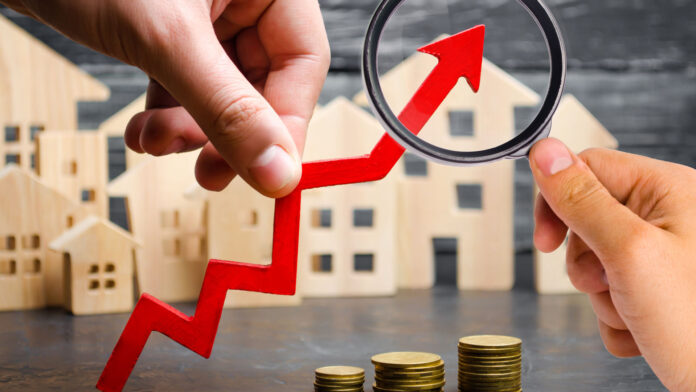
New studies indicate that disparities in home price and income growth rates are shutting out many prospective buyers from the housing market.
Lack of Housing Affordability Increasing Even Before Pandemic
Despite the fact that the COVID pandemic exacerbated the differences between skyrocketing home prices and plummeting household incomes for many workers, housing affordability was a long-standing problem prior to 2020.
According to an analysis by Bankrate of data from the National Association of Home Builders (NAHB) and Wells Fargo Housing Opportunity Index, the median home jumped +30% while household incomes clawed up just +11% in the last decade.
Even more dramatic, home prices (after accounting for inflation) jumped a whopping +118% since 1965 while simultaneously, income increased +15%, according to a report by Clever Real Estate (an online brokerage) based on data from the US Census.
Important: 2022 top agent success secrets [Revealed]: New FREE Real Estate Coaching web event, revealing 17 surprising secrets of the top 100 $$ millionaire agents. Get your FREE spot for the 2022 Real Estate Coaching webinar now. After you have attended this event you will have a huge feeling of relief knowing you will FINALLY laugh at your money worries – You will have your own personalized 2022 Step-By-Step Real Estate Business Plan. Learn now how to generate 100’s of motivated leads for FREE, without coming off as a pushy salesperson and losing your soul. You will soon know how to become one of the 1000s of agents making HUGE money who never thought they could. YES, I Want To Attend The FREE Webinar! <——Click To Register
Average Income Needed to Afford Purchasing a Home?
Most housing and financial experts suggest that home buyers ought to spend no more than 30% of their gross monthly income (total income before taxes and/or other deductions) on housing. Other experts and lenders advise potential buyers that a home’s sale price ought not exceed 2.5 times a buyer’s annual salary.
Such “rules of thumb,” however, are exceeding difficult to pull of these days, according to Francesca Ortegren, a data scientist with Clever Real Estate. Clever’s analysis of what it takes to afford a home in 2021 indicated that Americans need an average income of $144,192, not the median household income of $69,178 typically recommended.
Ortegren said that now, after the pandemic so steeply jacked up housing prices, homes cost an average of 5.4 time more than a typical homebuyer’s gross income.
“Healthy” Price-to-Income Ratio At or Below 2.6
Clever Real Estate found that only six of America’s 50 most populated cities have “healthy” price-to-income ratios of 2.6 or below. Those cities included Pittsburgh, Cleveland, Oklahoma City, St. Louis, Cincinnati and Birmingham AL.
Clever also found that the least affordable cities where price-to-income ratios can run as high as 9.8 included San Jose, San Francisco, San Diego, New York and Los Angeles.
Ortegren said, “To be able to afford a home, you have to make quite a bit of money or save for a very long time.” She also pointed to the fact that first-time buyers are even more disadvantaged because they don’t have funds to contribute towards buying a house from a previous home sale.
Generational Wealth Gap Growing Wider & More Difficult to Close
Because home equity and retirement savings account for the majority of household wealth, our historically high home prices over the last 50 years make it exceedingly difficult to close the country’s ever-widening generational wealth gap.
Ortegren said, “We are just increasing the number of people who are going to have a harder time building wealth by owning a home.”
Thanks to CNBC.























